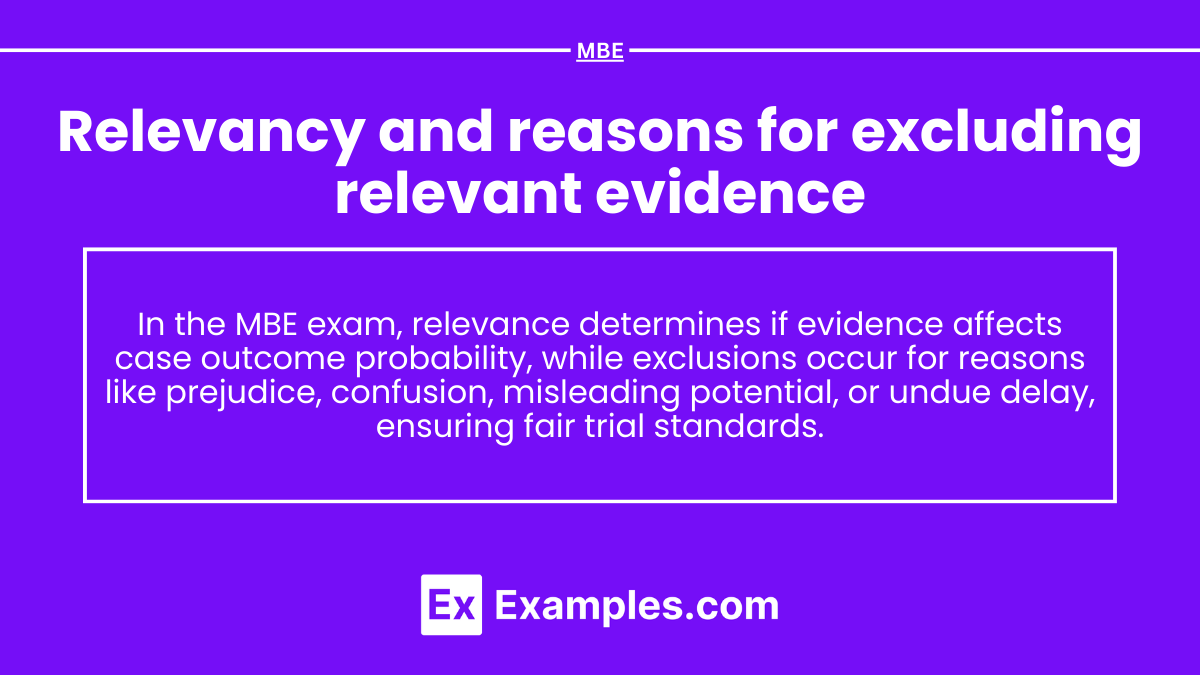In the MBE exam, understanding “Relevancy and Reasons for Excluding Relevant Evidence” is essential for mastering how courts assess which evidence can be presented in a case. This topic covers the legal standards for relevancy, rules for excluding certain relevant evidence, and various exceptions, providing a solid foundation for answering MBE evidence questions effectively.
Learning Objective
Study “Relevancy and Reasons for Excluding Relevant Evidence” for the MBE by focusing on how courts determine evidence relevancy and identify situations where even relevant evidence is excluded. Analyze the foundational standards of relevance and materiality, and explore exceptions to admissibility, such as hearsay, privilege, and unfair prejudice. Understand how courts balance the probative value of evidence against potential harm, confusion, or redundancy. Apply this knowledge to interpret evidentiary questions in practice scenarios, enabling confident assessment of which evidence impacts trial outcomes.
Defining Relevance in Legal Terms
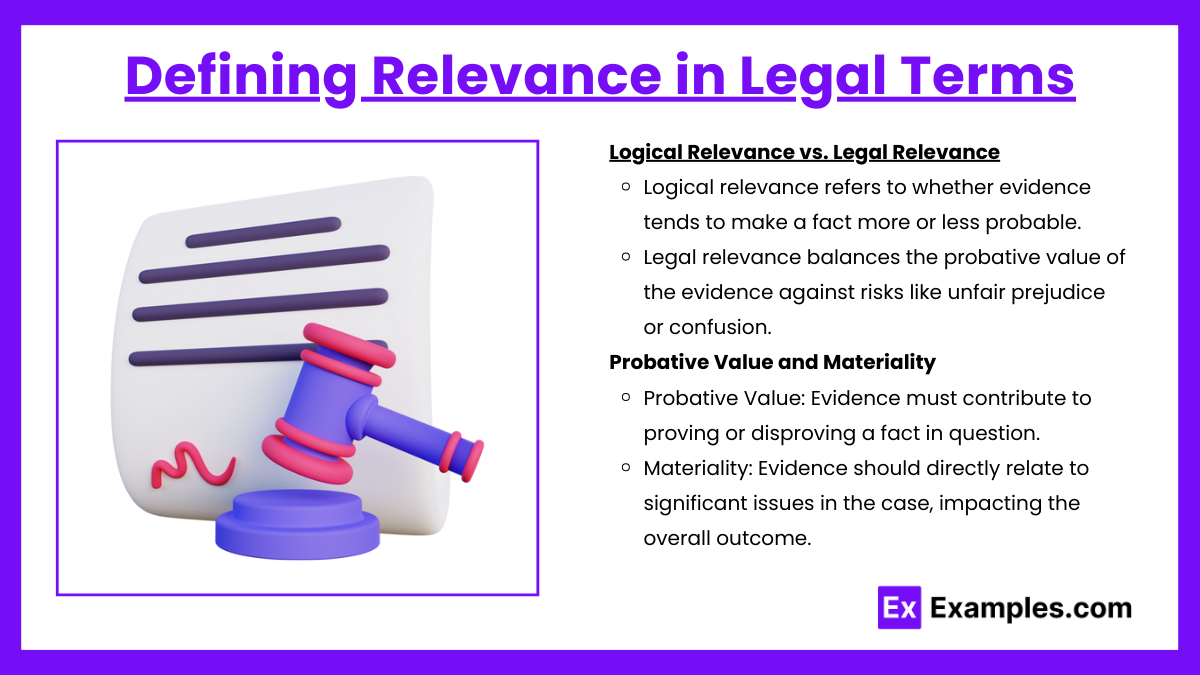
- Logical Relevance vs. Legal Relevance
- Logical relevance refers to whether evidence tends to make a fact more or less probable.
- Legal relevance balances the probative value of the evidence against risks like unfair prejudice or confusion.
- Probative Value and Materiality
- Probative Value: Evidence must contribute to proving or disproving a fact in question.
- Materiality: Evidence should directly relate to significant issues in the case, impacting the overall outcome.
Standards of Admissibility for Relevant Evidence
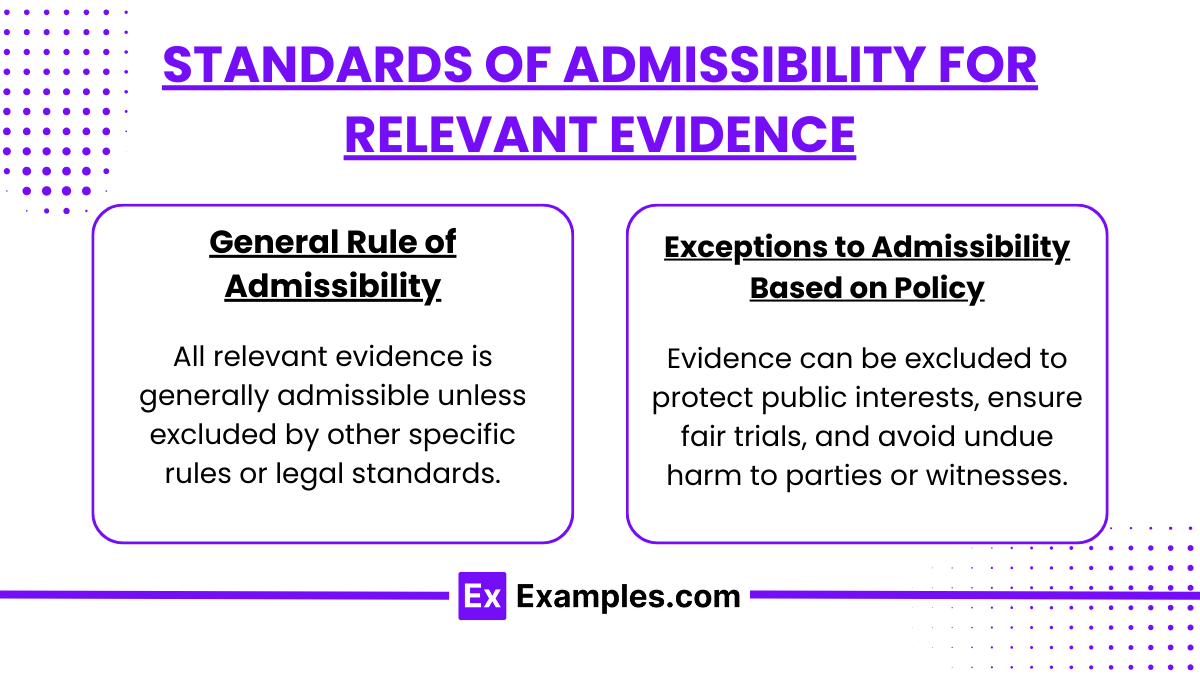
- General Rule of Admissibility
- All relevant evidence is generally admissible unless excluded by other specific rules or legal standards.
- Exceptions to Admissibility Based on Policy
- Evidence can be excluded to protect public interests, ensure fair trials, and avoid undue harm to parties or witnesses.
Reasons for Excluding Relevant Evidence
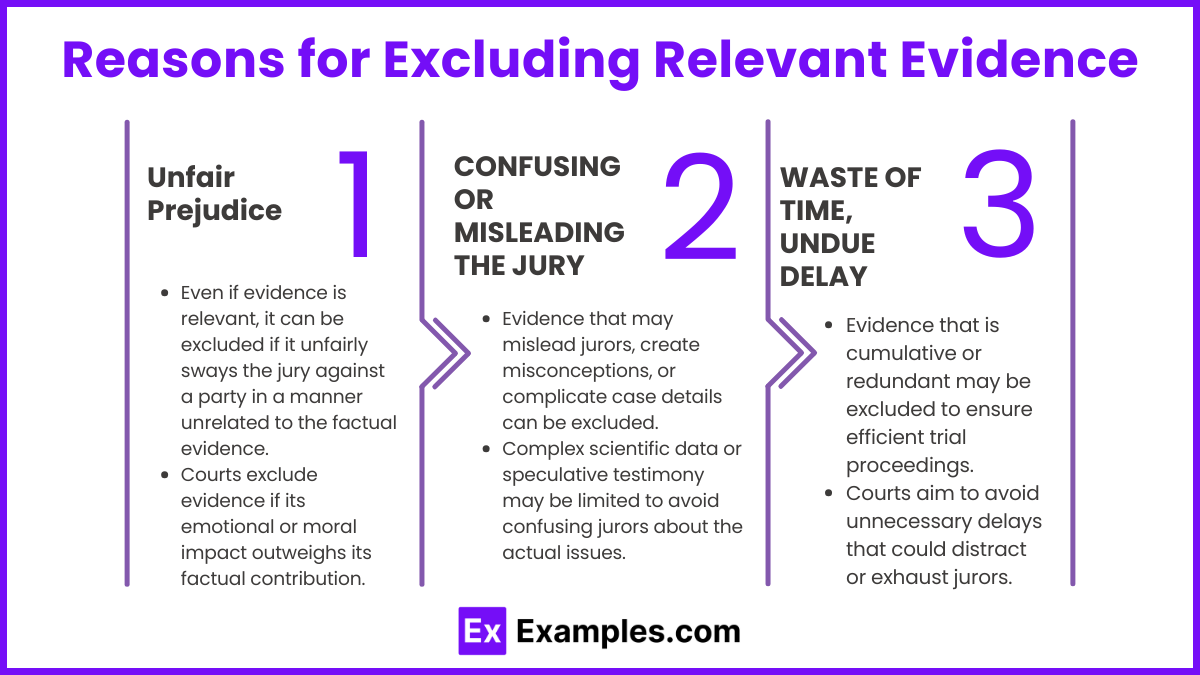
- Unfair Prejudice
- Even if evidence is relevant, it can be excluded if it unfairly sways the jury against a party in a manner unrelated to the factual evidence.
- Courts exclude evidence if its emotional or moral impact outweighs its factual contribution.
- Confusing or Misleading the Jury
- Evidence that may mislead jurors, create misconceptions, or complicate case details can be excluded.
- Complex scientific data or speculative testimony may be limited to avoid confusing jurors about the actual issues.
- Waste of Time, Undue Delay, or Needless Presentation
- Evidence that is cumulative or redundant may be excluded to ensure efficient trial proceedings.
- Courts aim to avoid unnecessary delays that could distract or exhaust jurors.
Judicial Role in Determining Relevancy and Exclusions
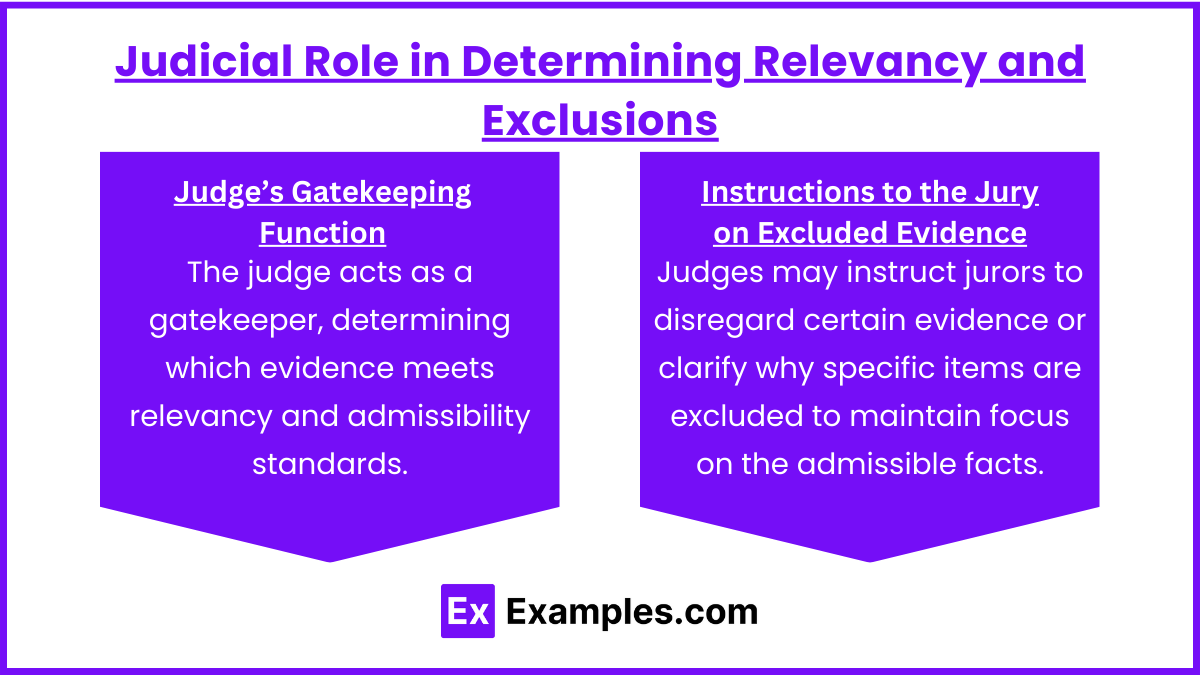
- Judge’s Gatekeeping Function
- The judge acts as a gatekeeper, determining which evidence meets relevancy and admissibility standards.
- The judge’s rulings on relevance impact the scope of evidence presented to jurors, ensuring a fair trial process.
- Instructions to the Jury on Excluded Evidence
- Judges may instruct jurors to disregard certain evidence or clarify why specific items are excluded to maintain focus on the admissible facts.
Examples
Example 1
A defense attorney objects to admitting evidence of a defendant’s prior criminal conviction, arguing it’s irrelevant to the current case.
Example 2
A judge excludes a graphic photo of the crime scene due to its potentially prejudicial impact, even though it’s relevant.
Example 3
The plaintiff tries to introduce evidence that the defendant offered a settlement, but the judge excludes it to avoid bias.
Example 4
A witness’s out-of-court statement is excluded under the hearsay rule, despite being relevant, as it lacks sufficient reliability.
Example 5
Evidence of subsequent safety improvements by a company is excluded to encourage safety efforts, unless it’s being used to show control or ownership.
Practice Questions
Question 1
During a trial, a prosecutor wants to introduce evidence of the defendant’s prior conviction to show a tendency to commit similar offenses. The defense objects. Which is the best reason for excluding this evidence?
(A) The evidence is irrelevant to the case.
(B) It is unfairly prejudicial under Rule 403.
(C) It lacks probative value.
(D) Prior convictions are never admissible.
Answer
(B) It is unfairly prejudicial under Rule 403.
Explanation
Prior convictions may be relevant but are often excluded if they unfairly prejudice the jury against the defendant, outweighing any probative value.
Question 2
The plaintiff seeks to introduce evidence that the defendant installed additional safety measures after an accident. The defendant objects, arguing it should be excluded. Under which rule would this evidence most likely be excluded?
(A) The hearsay rule
(B) The best evidence rule
(C) The rule on subsequent remedial measures
(D) The parol evidence rule
Answer
(C) The rule on subsequent remedial measures.
Explanation
Evidence of subsequent remedial measures is generally excluded to avoid discouraging safety improvements, although there are exceptions if it shows control or ownership.
Question 3
A witness’s statement was recorded by an officer immediately after an incident. The statement is relevant, but the defendant objects, arguing it is hearsay. What would allow this statement to be admitted?
(A) If it falls under the present sense impression exception.
(B) If it is determined to have low probative value.
(C) If the witness has a privileged relationship with the defendant.
(D) If it is irrelevant to the incident.
Answer
(A) If it falls under the present sense impression exception.
Explanation
A present sense impression is a hearsay exception, allowing statements made immediately after an event to be admitted due to their reliability.

